Club Junkie
Club Junkie Reviews: VA Composites Raijin 2.0 wood and hybrid shafts

VA Composites has been making premium graphite shafts since 2017 and the company’s shafts been played on professional tours as well and can be found in many amateur bags. Victor Afable has been designing shafts for a long time and brought all of that knowledge to VA when he started it. The original Raijin came out six years ago and has been one of the most popular models in the lineup.

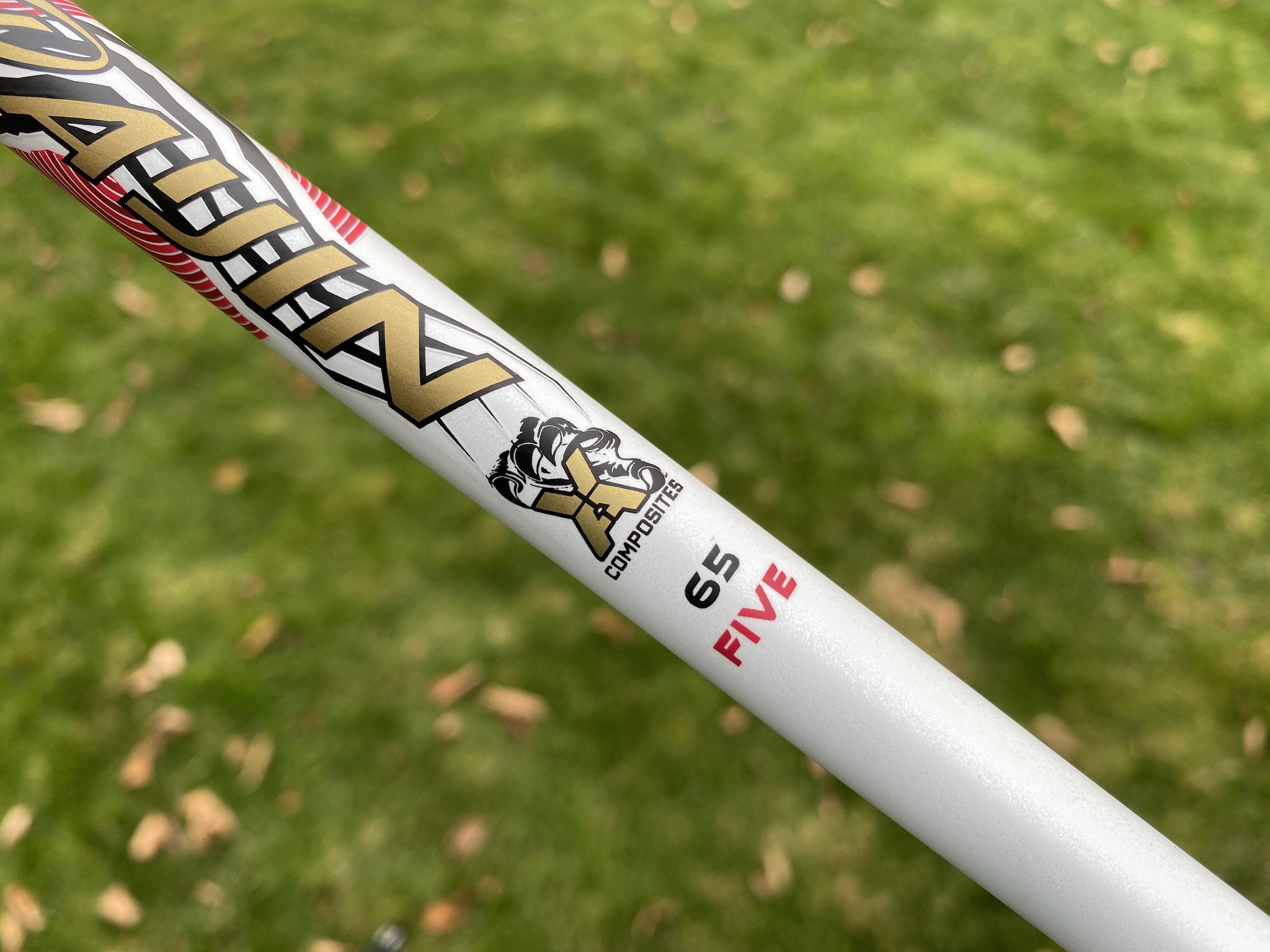
The Raijin 2.0 is a new shaft with plenty of updates, but keeps the original Raijin DNA intact. The profile on the 2.0 stays the same as the original with a firm handle section and stiff mid and tip. The torque rating is slightly lower on the new 2.0 and they are both mid-high launching shafts. Graphics have always been something that VA has knocked out of park and the matte finish on the Raijin 2.0 is pretty cool to look at.
I was hitting the 2.0 in my Titleist TSR2 driver and was really impressed with the shaft. I think it feels a touch more stout than the original but keeps the expected smooth feel. The launch was a touch lower and had a flatter flight than the original Raijin and I would slate it as a mid/high launch for me. In the TSR2 I had an average launch of 12.4 degrees, and that was very close to the shaft I have been gaming. The flight was pretty flat and boring with no rise to the shots, even if they were a small fade.
The Raijin 2.0 has a great kick at impact and is easy to square up without having to worry about hitting a big hook. Shots missed off the toe and heel stayed online really well and had very little curve to them. I could easily see that shots struck low heel tended to go right, but without that fade curve to them.


The hybrid Raijin 2.0 was very similar in the Tour Edge Exotics C722 head. The ball was easy to launch off the deck and provided a very straight ball. Even shots struck low on the face, my miss with hybrid, the ball was still able to get in the air a good amount and add some carry. Well struck shots flew high and landed very soft. Using it off the tee was great but I didn’t get much roll, if any, off the fairway. Again the Raijin 2.0 offered very good stability on miss hits and kept the ball online consistently. The shaft was easy to square up at impact but didn’t add any left bias to the hybrid.
Overall I was really impressed with the new VA Composites Raijin 2.0 and think it is a solid upgrade. Victor and his team didn’t take anything away from the original profile and gave us a little tighter and lower launching version. Check out vashafts.com for more info on the Raijin 2.0.
To hear the full review on the Raijin 2.0 driver and hybrid shaft check the podcast links below or search GolfWRX Radio on your preferred podcast app.
- LIKE11
- LEGIT4
- WOW3
- LOL1
- IDHT1
- FLOP0
- OB0
- SHANK0
Club Junkie
Club Junkie Review: Cobra’s new King Tour irons

The Cobra King Tour irons have been proven on the PGA Tour already and will be in bags of better amateur players this year. The previous King Tour MIM irons were very underrated and offered great precision with a solid shape that many players liked. Cobra went away from the Metal Injection Molded construction and went with a five-step forging process for soft and solid feel.
Make sure to check out the full podcast review at the links below and search GolfWRX Radio on every podcast platform.
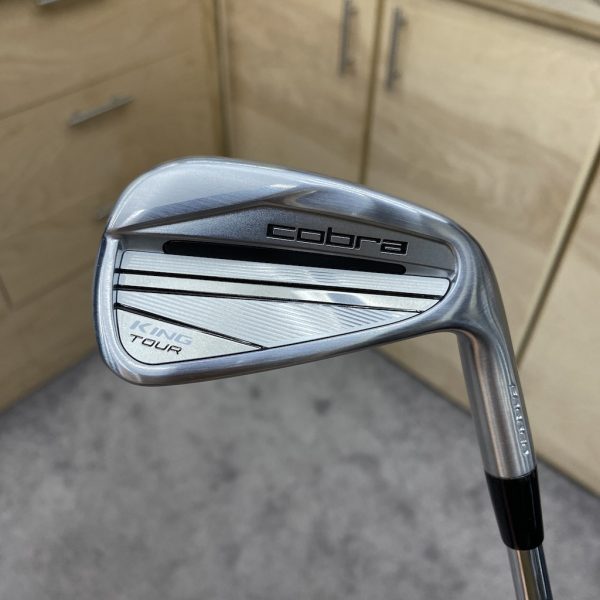

I was a big fan of the previous Tour MIM irons and played them in rotation throughout the last two years. Out of the box, I was impressed with the more simple and clean look of the badging on the new King Tour. Badging is mostly silver with just small black accents that should appeal to even the pickiest golfers. I didn’t notice the shorter blade length in the new irons but did notice that the leading edge is just slightly more rounded. Topline is thin, but not razor thin, but still has enough there to give you the confidence that you don’t have to hit it on the dead center every shot.
Feel is solid and soft with just a slight click to the thud on well struck shots while mishits are met with a little more sound and vibration to the hands.

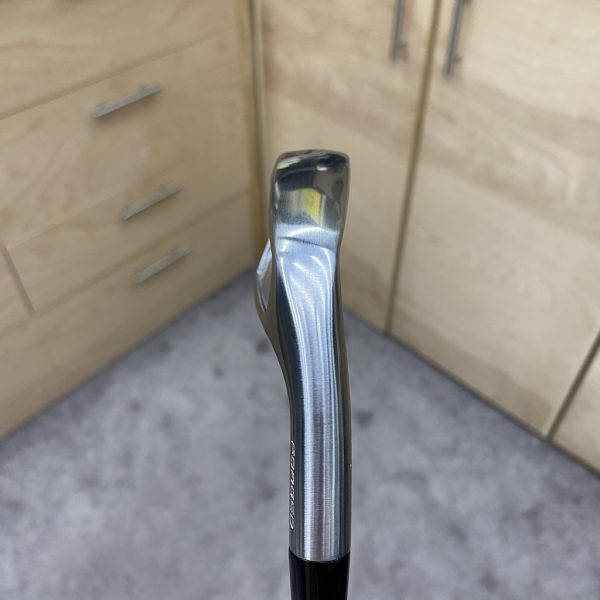
These King Tour irons are built to be cannons and place more emphasis on consistent and precise shots. I also felt like the new irons launch easily and maybe a touch higher than some irons in the same category.
My launch monitor showed my 7 iron with an average launch angle of 22 degrees and spin right around 5,800 with a Project X LZ 6.0 stock shaft. Ball speed isn’t the ultimate focus of this iron but it did well with an average around 108mph and the iron was able to keep the speed up well when you didn’t strike the center. You will still see a drop off in speed and distance when you miss the center, but you don’t have to be Navy SEAL sniper accurate on the face to achieve a good shot. Dispersion was very tight, and while there are bigger irons with more forgiveness, this players cavity still allows good playability when you aren’t bringing your A-plus game to the course.
Cobra lists the King Tour as an iron for a Tour level player up to a 7 handicap and I think this iron could see the bags of more golfers than that. I am a 9.4 handicap, and I felt more than comfortable playing this iron even on less than perfect days.
- LIKE16
- LEGIT4
- WOW2
- LOL0
- IDHT0
- FLOP0
- OB0
- SHANK0
Club Junkie
Club Junkie Review: TaylorMade Stealth 2 drivers

The TaylorMade Stealth 2 drivers still have red carbon faces, but that isn’t the only carbon fiber in the head. The heads now only have titanium to support the face and connect the shaft. The rest of the driver head is made from carbon fiber and carbon composite. This allows the talented TaylorMade engineers to move more weight around and add more forgiveness to a very long driver.
Like last year there are three flavors to cover every driver need: Stealth 2, Stealth 2 Plus, and the Stealth 2 HD.
For a more detailed review, please take a listen to the Club Junkie below or on any podcast platform. Just search GolfWRX Radio.
Stealth 2 Plus
I typically like the bigger and more forgiving drivers, but this ended up being the one I hit the best. My miss is a low-left hook that comes from some swing flaws, and it was a shot I saw too many times with last year’s Stealth. My first time on the range, I noticed that shot would actually launch a little higher, stay in the air better, and not go as hard left.
The Plus might be the lowest-launching of the three, but it is still easy to elevate off the tee and produces flat, boring drives. I averaged a launch of 11.1 degrees in a 10.5-degree head with a Fujikura Ventus TR Red shaft. Spin was also the lowest and averaged 2,874 RPM, but the bigger part of that number is how the spin variation from center strikes to off center is very low. Only a few hundred RPM separated the highest and lowest spinning shots.
The Plus also offered the least draw out of the group with a very straight ball flight and even a few shots that went a hair to the right.

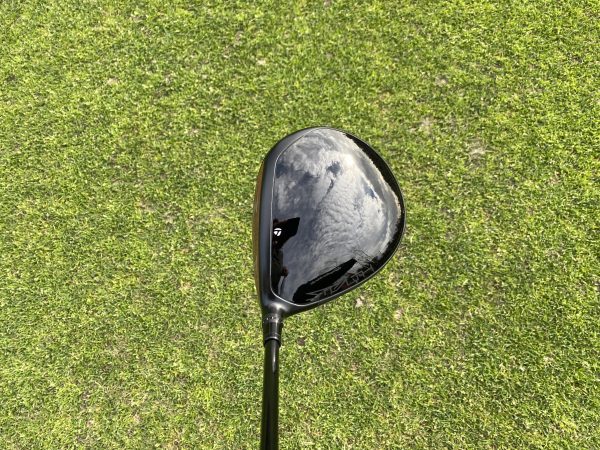

Stealth 2
This the bread-and-butter driver option offering hefty amounts of forgiveness and is easy to launch while offering low spin. This is the model that should launch and spin in-between the other two, but it actually ended up being the lowest launching for me. It wasn’t by much, but I had an average launch of 10.2 degrees with a 10.5-degree head and the same shaft as the Stealth 2 Plus. The spin was a little higher but only by a very small margin, as I averaged 2,917 RPMs.
For most players the nice thing about the Stealth 2 is that it seems a little easier to square up and turn over at impact. I saw a little more draw in the shots and the starting line was more straight to just slightly left. Like the Plus, I was pleased with the face that my miss off the high toe launched a little higher and stayed in the air a bit longer for a more playable shot.

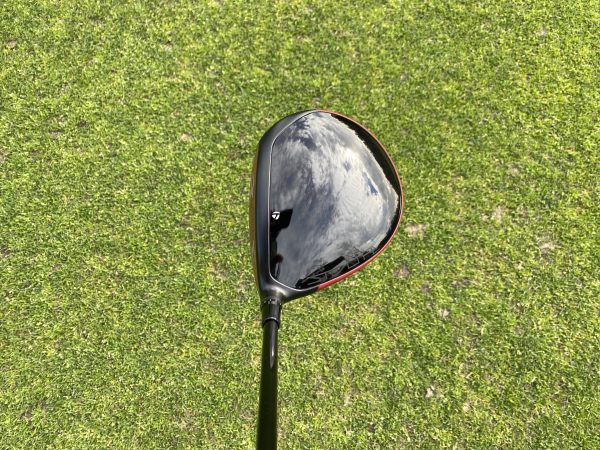

Stealth 2 HD
I was actually the most excited to try this head because of how it looks. Most higher launching, draw-bias drivers sit very closed, and I don’t love that look. First time I set the HD down I was impressed that it looked square and a little larger, mostly from the visible red Carbon Composite Ring around the back. The HD also has a slightly shorter hosel that makes the driver play 1/4 inch shorter than the other two.
The HD did launch the highest at 11.5 degrees and spun the most, 3,105 RPM, out of the three Stealth 2 models. Those numbers still don’t sound like a high launching, spinny driver to me. The HD was the easiest of the Stealth models to turn over and really took away any shots to the right and any fade that I could have hit with the Plus. Off-center hits held up with solid ball speed and the added forgiveness in the head kept most shots online.
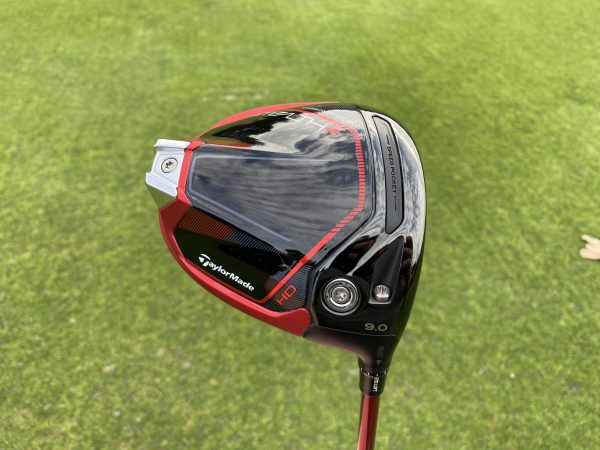


TaylorMade’s Stealth 2 line of drivers mixes distance with added forgiveness this year to really help golfers of all levels. Each model can cover a wide array of golfer abilities and the better players will still like the confident look from address. If you are looking to add a new driver to your bag this year, the Stealth 2 line is worth swinging.
- LIKE24
- LEGIT2
- WOW4
- LOL3
- IDHT0
- FLOP2
- OB1
- SHANK4
Club Junkie
Club Junkie Review: Vega Golf VDC and Mizar Tour irons

You may not have heard of Vega Golf, but the company has been making golf clubs for quite some time in Japan. Vega is known for their expertise in forging metal and the great feel their irons offer. This week I get to talk about different irons in their lineup and how they performed for me. For a more detailed review, please take a listen to the Club Junkie below or on any podcast platform. Just search GolfWRX Radio.
Star Line: Mizar Tour
The Mizar Tour is a compact players distance iron that is packed with technology. Wheres a lot of multi-piece irons just have a forged face, the entire body of the Mizar Tour is forged from S25c steel. The face is crafted from a high strength maraging steel and only 3.5mm thick for added ball speed.
Out of the box, the Mizar Tour look good with a lightly satin chrome finish and small black badge in the cavity. The irons look compact, with a thin sole, and you would not think it is made from multiple pieces. If you are a fan of less offset, the Mizar Tour is going to fit your eye really well as even the long irons have almost none. These irons might have the lest amount of offset I have seen in a retail iron that isn’t a blade. The shape is a little softer and more rounded than the VDC irons.
Hitting balls with the Mizar Tour is really pleasant, and as you would think, you get a very soft feel upon impact. Even off center shots have a good feel to them but with a little added vibration for feedback. The ball flight is mid/high and the irons are easy to launch off the turf. The long irons, like the 4, are a little intimidating because of the compact look and almost no offset. The longer irons are still pretty easy to launch and much more playable than you would expect.
The nice thing about the Mizar Tour is that when you miss that thin face allows you to still get minimal drop off in distance. Shots also stayed online better than I expected with these irons. Heel strikes and shots low on the face carried very well and online where you noticed a little more distance loss when you struck the ball on the toe. I love the players distance irons that allow players like myself to play a more compact iron without sacrificing performance.




Classic Line: VDC
The VDC shows off its fantastic milling work on the back side with dual cavities that allow Vega to adjust the CG higher on the irons for the perfect players cavity set. The irons look great with a slightly more square toe and edgier look to them than the Mizar line. The blade length is a little longer from heel to toe while still giving a traditional compact look. Faces on all the irons are micro-milled as well for precision shots and distance control. The sole is narrow and has a pre-worn leading edge for improved turf interaction. These irons again have very little offset, with maybe just a hair more than the Mizar set. Overall the shape is very proportionate and discerning players should be confident standing over them.
Feel on the VDC irons is wildly soft, making two-piece range balls feel soft. Shots struck in the center are met with a solid “thud” sound and that feeling of did you even make contact with the ball. While the face didn’t give you the sense of ball exploding off the face, the VDC provided solid distance and an ability to work the ball in any direction. The ball flight was more mid launching with a noticeably flatter trajectory than the Mizar.
If you are a player that likes to shape shots, the VDC will allow you to not only go right and left, but also allow you to pick your trajectory and really dial in those touch shots. The VDC is a little more demanding when it comes to forgiveness, and you will notice more of a distance drop off when you get away from the center of the face. The shots hit near the heel kept that solid and soft feel where the shots out on the toe and low are met with a little added vibration and click. Nothing is harsh, even in the cold weather I was hitting in and that responsiveness should help those feel players.
The VDC is a high-end players cavity iron set that offers great, soft feel that you would expect with precision shot making.




Overall, the Vega line of irons are high performance and great feeling. You can go down the Classic Line for traditional shapes and buttery soft feel or take the Star Line for technology packed irons with added firepower. Either way you go, there is probably a Vega iron that fits your game.
- LIKE18
- LEGIT6
- WOW10
- LOL2
- IDHT0
- FLOP1
- OB1
- SHANK4
-

 News1 week ago
News1 week agoExperts on understanding ground force and how shoes can impact your golf game
-

 19th Hole3 weeks ago
19th Hole3 weeks ago‘Most overrated course in the world!’ – Major champ rips ‘awful’ Pinehurst No. 2
-

 Equipment2 weeks ago
Equipment2 weeks agoMiura launches new forged wedge series
-

 19th Hole3 weeks ago
19th Hole3 weeks agoAimPoint under attack again as footage from U.S. Open enrages golf fans
-

 19th Hole2 weeks ago
19th Hole2 weeks agoRory McIlroy releases statement following crushing U.S. Open loss
-

 19th Hole3 days ago
19th Hole3 days ago‘You’re right, we’re always wrong!’ – Sergio Garcia receives warning during Open qualifier
-

 19th Hole2 weeks ago
19th Hole2 weeks agoTour pro says Rory McIIroy needs to replace caddie Harry Diamond following U.S. Open collapse
-

 19th Hole3 weeks ago
19th Hole3 weeks agoBryson explains last minute driver head switch and says he ‘probably shouldn’t have changed’ despite U.S. Open win

























